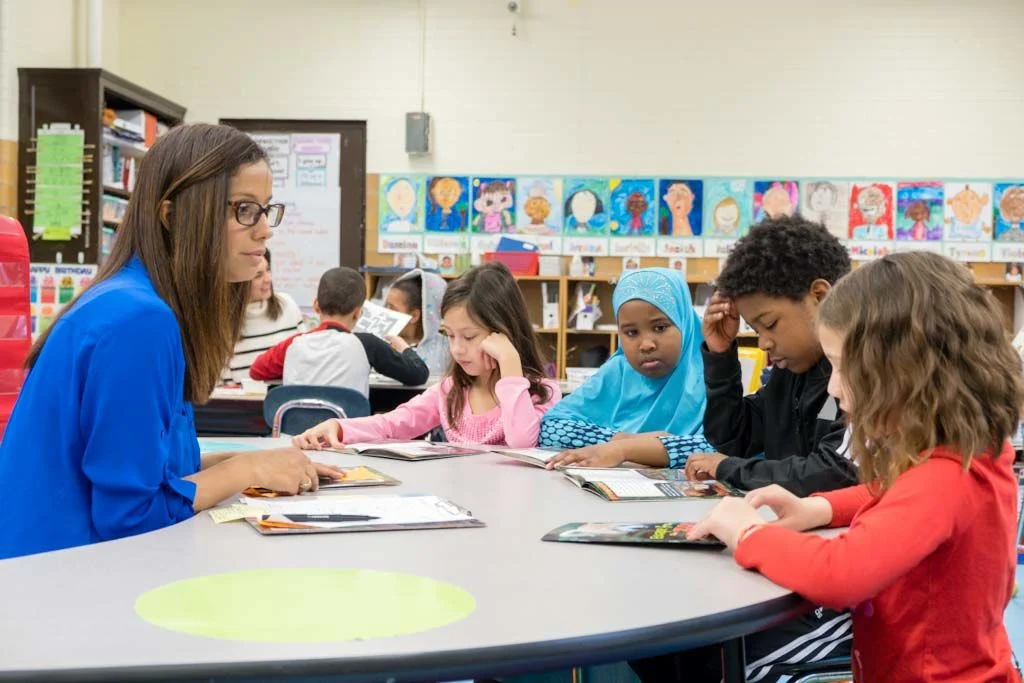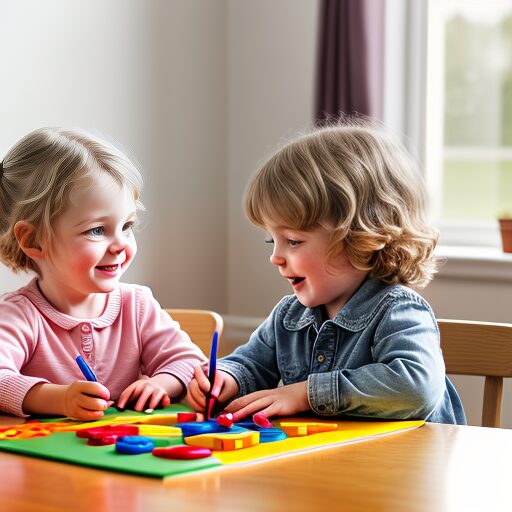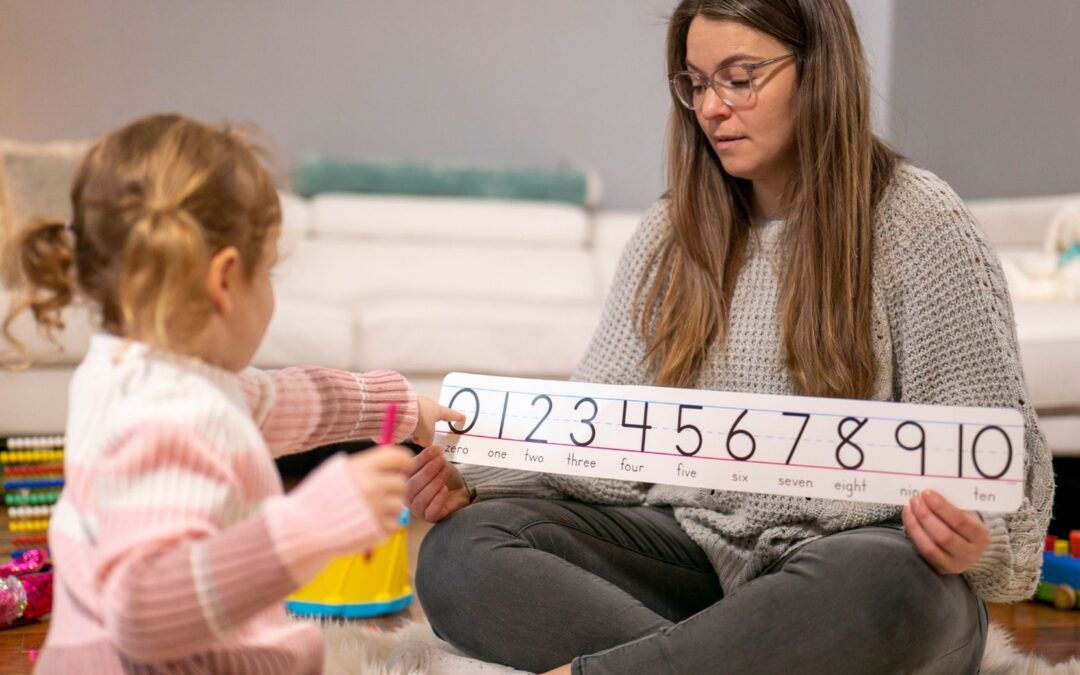The preschool years are a critical period for developing foundational academic skills that will launch children on a lifelong journey of learning and achievement. At Crystals Childcare and Preschool, we recognize the immense responsibility of caring for and educating young children during these formative years. Our goal is not only to keep children safe, happy, and engaged, but to equip them with essential literacy and numeracy competencies.
As an NAEYC-accredited preschool, our curriculum aligns with key early learning standards and focuses explicitly on setting the groundwork for reading, writing, math, science, and social skills. We cultivate a nurturing environment where curiosity blooms naturally, and children embrace learning through purposeful play-based activities and teacher-guided instruction.
Early Literacy Skills: Building the Foundation for Reading Success
Developing early literacy skills lays the groundwork for future reading success by teaching children to understand spoken and written language. Our program focuses on building phonemic awareness, phonics, vocabulary, reading comprehension, and verbal expression.
Phonemic Awareness
Phonemic awareness is the ability to recognize that spoken words consist of individual sounds blended together. We use songs, chants, and games to sharpen children’s ability to separate, blend, and manipulate sounds in words. For example, breaking down words into onset-rime blocks teaches children to recognize word families that rhyme. This understanding sets the stage for grasping phonics.
Phonics
Phonics is the relationship between letters and their corresponding sounds. We use a balanced literacy approach, guiding children to apply phonics strategies to sound out unfamiliar words. Hands-on activities allow them to match letters to sounds and build their decoding skills through interactive games and manipulatives.
Vocabulary
A strong vocabulary provides the foundation for reading comprehension. We expose children to rich language, facilitating word learning through read-aloud, thematic units, show-and-tell sessions, and circle time discussions. Labeling classroom objects, using descriptive words, and explaining new concepts all provide incidental vocabulary instruction.


Comprehension
Reading comprehension goes beyond just recognizing words to extracting meaning from text. We encourage active engagement with books by prompting children to make connections, visualize descriptions, retell important events, and answer questions about stories we read together. These skills prepare them to comprehend more complex texts independently.
Verbal Expression
Language expression entails using words to communicate ideas effectively. We cultivate verbal skills through modeling correct grammar, providing opportunities for conversation, and presenting open-ended questions that require elaborate responses. Show and tell, group discussions, and dramatic play all enable children to practice articulating thoughts verbally.
Numeracy Skills: Building the Foundation for Math Success
Developing numeracy skills equips children with the critical thinking and problem-solving abilities needed to understand mathematical concepts. We incorporate hands-on math learning through structured activities and child-directed explorations.
Number Sense and Counting
Children gain the foundation for math literacy by learning to count quantities, recognize written numerals, sequence numbers, and compare relative magnitudes. We sing counting songs, use visual aids, provide manipulatives for sorting objects, and play interactive games to build these essential skills.
Simple Operations
Understanding how quantities can be combined, separated, and transformed lays the groundwork for arithmetic. We provide opportunities for children to model simple addition and subtraction situations concretely using blocks, counters, or other objects. This grasp of mathematical relationships and processes prepares them for symbolic operations.
Patterns and Classifying
Recognizing patterns allows children to make connections and logical predictions. We encourage children to identify attributes, sort objects by color, shape, or size, and create simple patterns using beads, blocks, and art materials. These categorization activities teach important classification, seriation, and spatial relationship skills.
Measurement
We incorporate measurement activities into classroom routines and playtime to develop children’s understanding of using standard and non-standard units to quantify and compare attributes like length, capacity, and area. For example, they might use snap cubes laid end-to-end to measure objects across the room. Comparing the capacities of containers during water play or using a scale to weigh classroom objects teaches measurement concepts through hands-on experience.






Shapes and Spatial Sense
Recognizing shapes, understanding directionality, and developing spatial visualization skills are foundational to geometry and spatial reasoning. We encourage children to find examples of common shapes around the classroom, use their bodies to form shapes, and create artwork or
block structures depicting shapes. Following positional words like over, under, beside, and behind or navigating obstacle courses teaches important spatial concepts.
Process Over Product
Our goal is not to accelerate academic learning but to equip children with the confidence and cognitive abilities to embrace numeracy. We focus more on the process than the products, allowing children to explore mathematical concepts through playful, engaging activities. Instead of worksheets and rote practice, we provide hands-on, multi-sensory math experiences that spark curiosity, critical thinking, and a natural motivation to learn.
Learning Through Play
At Crystals Childcare and Preschool, intentional play activities form the backbone of our curriculum as research clearly demonstrates the incredible capacity of young children to learn through play. Child-directed explorations allow our teachers to take advantage of spontaneous “teachable moments” to enhance conceptual understanding. Whether participating in dramatic role play, building with blocks, or manipulating modeling dough, children rehearse literacy and math skills in developmentally appropriate, engaging contexts.
For example, block play enables children to strengthen spatial, patterning, measurement, counting, and fractional skills. As they envision and construct buildings, children naturally incorporate literacy concepts as well, creating signs to label their structures. They also address emotional concepts through pretend play by acting out scenarios, processing feelings, and building social skills.
In essence, play provides an ideal avenue to foster academic, social-emotional, and physical competencies in a holistic, integrated manner, while allowing children freedom of expression and choice. Our indoor playground and outdoor green space provide special areas where children can actively explore concepts through self-directed play.
Enriching Environments to Facilitate Learning through Experience
We purposefully design classroom environments to be enriched with multisensory opportunities that promote learning through experience. Organized thematic learning centers allow children to select activities that pique their interests and curiosity in key curriculum areas like literacy, math, science, art, dramatic play, and building. These self-directed explorations teach children to take
initiative and engage ardently with meaningful concepts while developing independence, self-regulation, and a passion for learning.
Literacy Centers
The reading center contains comfortable cushions and a diverse classroom library with fiction and nonfiction books to immerse children in rich language. Children strengthen vocabulary, comprehension, and fluency as they interact with books independently or collaboratively. Alphabet centers with tactile letter manipulatives allow children to reinforce letter recognition and phonics skills through play.
Writing centers stocked with paper, envelopes, staplers, pens, stamps, and sticky notes encourage emergent writing skills and provide opportunities to practice fine motor development. Children construct meaning by “writing” notes to classmates, creating signs, or making their storybooks. Print-rich labels, displayed charts, and artwork surrounds children with meaningful written language.
Math Centers
The math and manipulative center encourages hands-on exploration with counters, connecting blocks, puzzles, lacing cards, and other tactile resources to reinforce counting, sorting, patterning, categorizing, and comparing skills naturally during play. Puzzles boost spatial reasoning, fine motor skills, and complex problem-solving abilities. Scales facilitate weight measurement and comparison.
Sensory exploration of pouring, scooping, filling, and emptying containers allows children to strengthen estimation and measurement abilities during water or sand play. An abacus aids practice with complex counting concepts. Displayed number lines, measurement tools, and shape examples facilitate incidental math learning during self-directed play.
Science and Discovery Centers
Natural materials like rocks, pine cones, fossils, shells, and plants invite sensory exploration and comparison. Magnets, prisms, color paddles, magnifying glasses, tweezers, and droppers enable children to investigate scientific properties first-hand through manipulation during playful experiments. Nature exploration opportunities in our outdoor learning environments further connect children to natural phenomena and geoscience concepts.
Themed Dramatic Play Areas
Dramatic play areas based on grocery stores, hospitals, restaurants, or construction sites allow children to act out real-life roles, processing concepts and vocabulary learned from related storybooks and thematic lessons. As children engage socially to recreate narratives in their imagination, they strengthen perspective-taking, comprehension, and language expression naturally.
Art, Building, and Creative Expression
Our bright, inviting art studio provides a rotating variety of painting, sculpting, collage, and drawing materials for open-ended, process-focused creation that develops spatial, motor, decision-making, and planning skills essential to success in other academic domains. Similarly, wooden unit blocks, Lego, and other building accessories enable children to construct creations from their imagination, facilitating geometric and engineering concepts.

